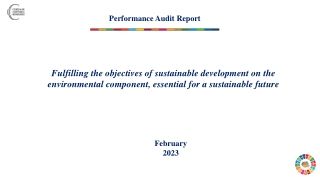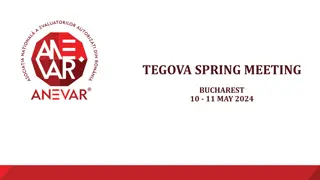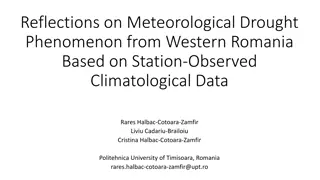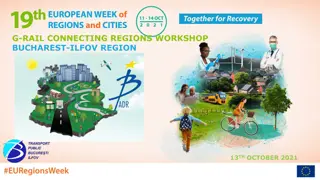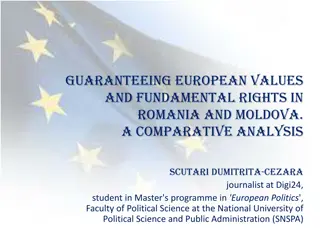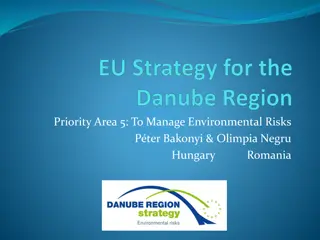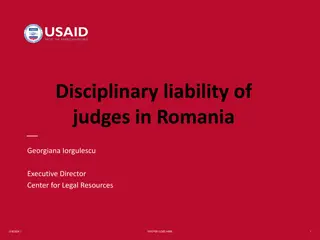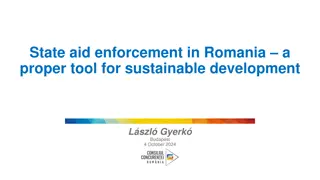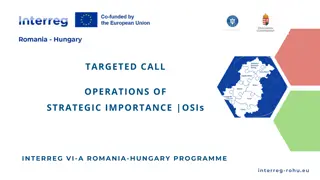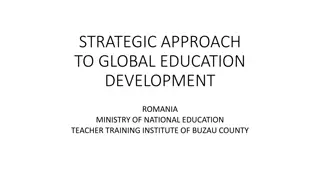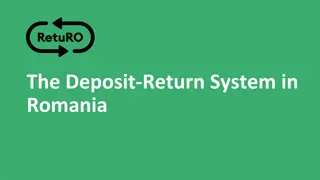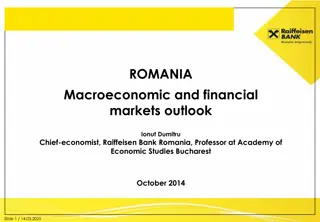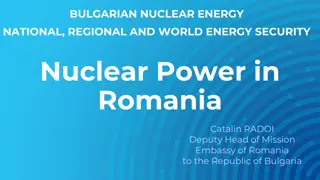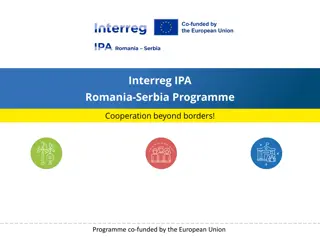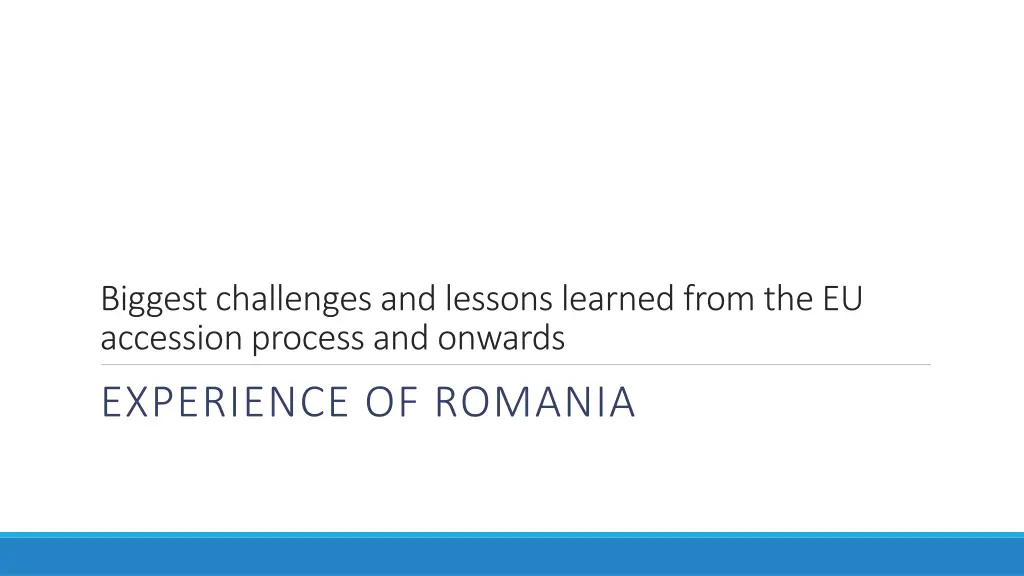
Challenges and Lessons from Romania's EU Accession Process
Explore the historical background and milestones of Romania's journey towards EU membership, along with the challenges faced and lessons learned. Discover the significance of key events such as the negotiation process, accession treaty signing, and becoming a full-fledged EU member. Learn about programs and initiatives aimed at aligning Romania with European statistical standards and norms.
Download Presentation

Please find below an Image/Link to download the presentation.
The content on the website is provided AS IS for your information and personal use only. It may not be sold, licensed, or shared on other websites without obtaining consent from the author. If you encounter any issues during the download, it is possible that the publisher has removed the file from their server.
You are allowed to download the files provided on this website for personal or commercial use, subject to the condition that they are used lawfully. All files are the property of their respective owners.
The content on the website is provided AS IS for your information and personal use only. It may not be sold, licensed, or shared on other websites without obtaining consent from the author.
E N D
Presentation Transcript
Biggest challenges and lessons learned from the EU accession process and onwards EXPERIENCE OF ROMANIA
Historical background New Member States, including Romania Enlargement of the EU in 2004-2007 a historic challenge Number of applicants: growth of more than 30% in the EU population; Central European countries - different political background adopt the EU legislation; enforce the acquis
Milestones 1995 February 2000: December 2003 December 2004 Romania presents the official application for EU membership The Romania-EU Intergovernmental Conference. The negotiation process of Romania s accession to the European Union is launched officially The European Council in Brussels establishes the schedule for Romania s accession to the European Union The Brussels European Council confirms the conclusion of accession negotiations with Romania from a technical point of view
Milestones October 2005, May 2006 and September 2006 April 2005 December 2006 2007 Signing in Luxembourg of the EU Accession Treaty of Romania and Bulgaria The European Commission issues Monitoring Reports on Romania and Bulgaria The European Council confirms the accession of Romania to the EU on 1st January 2007 Romania becomes full- fledged Member of the European Union
Jan 1994 Common Declaration between statistical offices of transition countries and Eurostat Framework of cooperation in statistics Know-how transfer (e.g. 1985 Material Production System>>> National Accounts System) June 1994 Common Bilateral Declaration between NIS-RO and Eurostat
National Phare programmes targeted for NIS-RO needs, having as results improved infrastructure by means of which statistics are communicated; an international information technology platform with common internal architecture, hardware and software; training that created the skill base necessary for the operation of informatics systems MC programmes equipping the NIS with the methodological tools (TA/ TES courses/ pilot projects/ sectoral studies) to meet the challenge of political and economic reform and to meet European statistical standards and norms Phare funding: VITAL Bilateral cooperation with some EU NSIs (France, Italy, Portugal )
Statistics negotiating chapter (among 31 chapters) The pre-accession process: the objective of the NIS was to ensure that, at the time of accession, Romania can meet the statistical obligations 2 main documents 1998-2000: 3 rounds of analytical examination of the acquis in statistics (one bilateral and 2 multilateral): progress + deficiencies + short and long term measures A. Position paper in relation to statistics, adopted by the RO Government with 16 signatures of the ministries in the frame of cooperation and coordination = the cornerstone of the National Statistical System B: Negotiating Memorandum overview of the RO statistical system, with its strong and weak points, with medium term objectives and necessary actions, anticipated results and the timing
Statistics negotiating chapter (among 31 chapters) July 2000: statistical chapter opening November 2000: the closing of the chapter; In the European Commission General Report (November 2000), statistics is illustrated among the domains with a positive development; General conclusion: progress is visible but the coverage in the case of many fields needs considerable improvements (especially in agriculture and tourism); The alert signal: the administrative capacity of the NIS n danger because of the organisational problems and due to the high turnover of statistical staff ; The letter of the EU Commissioner (Mr. Pedro Solbes) addressed to the NIS very important: - positive statements regarding the employees and the NIS activity
Key role of statistics -Promote and help the accession process Reliability Impartiality Confidentiality Transparency
New information needs; Need for data comparability GENERAL Challenges Changes in infrastructure configuration; Changes of the basic tools and concepts; Introducing new methodological tools; Building confidence in statistics; Meeting the user requirements; Development of human resources SPECIFIC
Key messages Government support without compromising independence Up-to-date statistical technologies Communication: within the statistical system; with the users Relationship with the academia and with the NSIs of EU Member States
Succes! Good luck!

